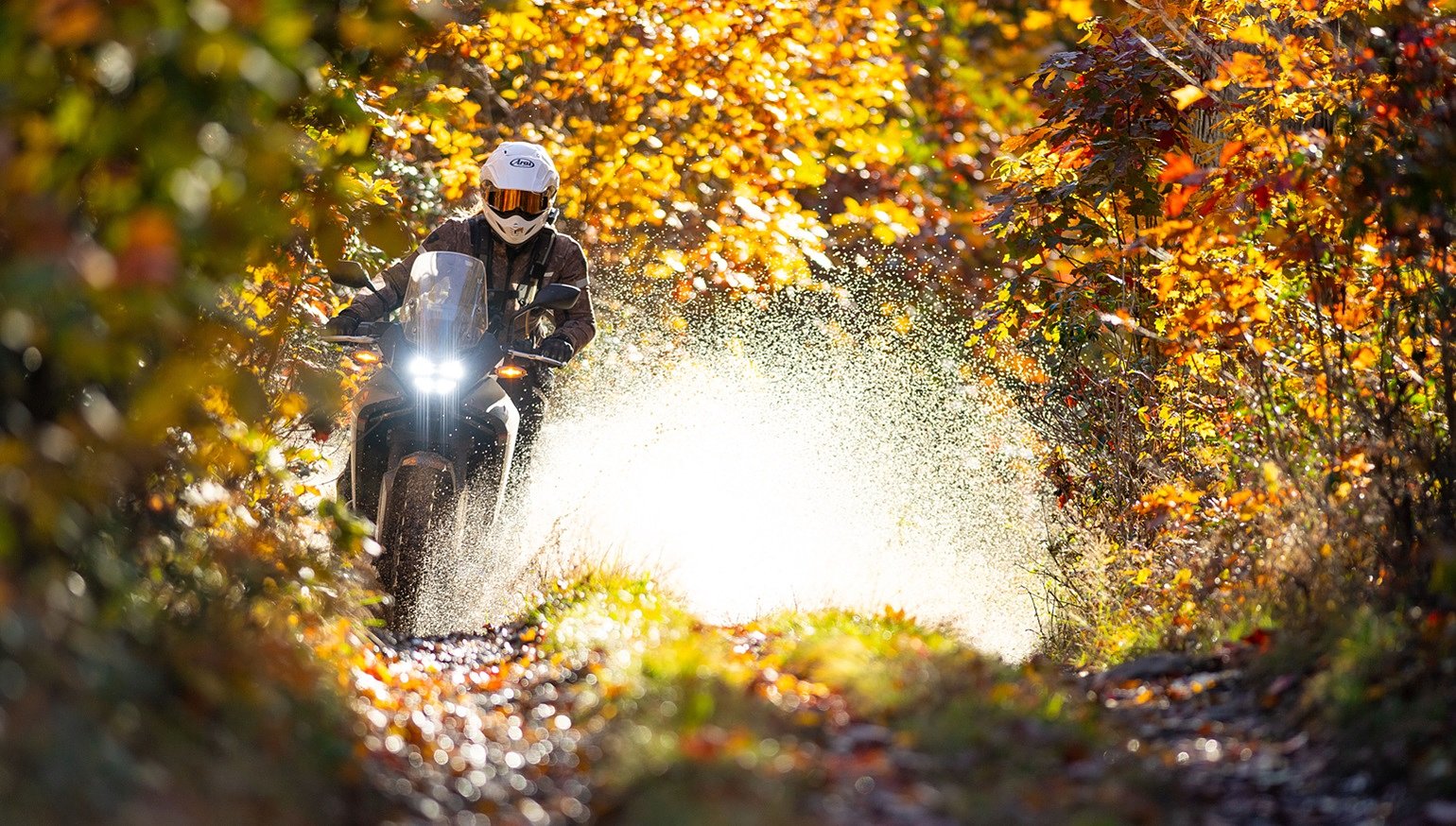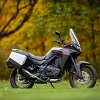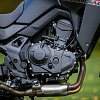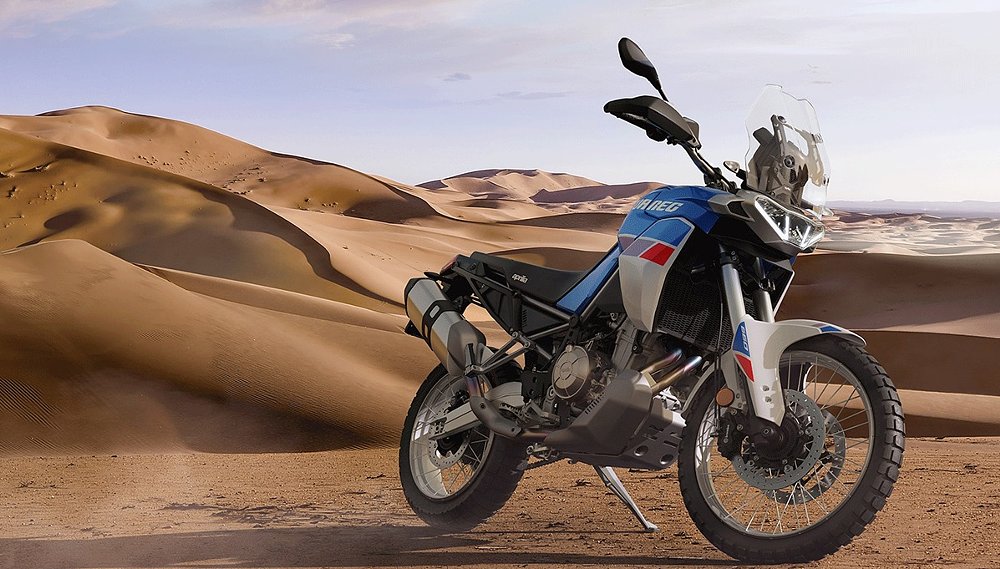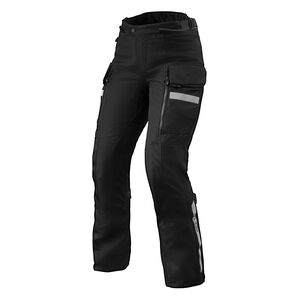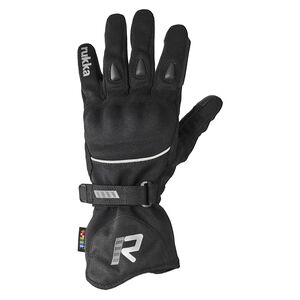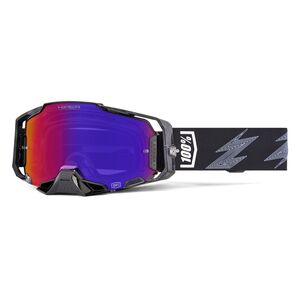Americans, rejoice, because Honda has finally brought the XL750 Transalp stateside. A middleweight adventure bike intentionally designed to occupy the blank space in Honda's lineup between the Africa Twin above and the CRF300L Rally and the CB500X below.
Firmly planted in the center of the realm between off-road and on-road, large and small, the Transalp is Honda's first true entry in the modern mid-adventure market, a segment that has grown by a factor of four since 2018. It boasts an all-new, liquid-cooled, four-stroke, eight-valve, 755 cc Uni-cam parallel-twin engine, designed to generate both top-end performance and strong, usable low- to mid-range torque. For an ADV bike, it's quite short, narrow, and light, with an accessible seat height of 33.7 inches, ground clearance of 8.3 inches, and a wet weight of 459 pounds. True to ADV-bike specs, it rolls on 21-inch front and 18-inch rear spoked wheels and has a Showa 43 mm SFF-CA inverted fork and remote reservoir shock, both with adjustable preload. It boasts a mountain of tech. And it costs a dollar under $10,000.
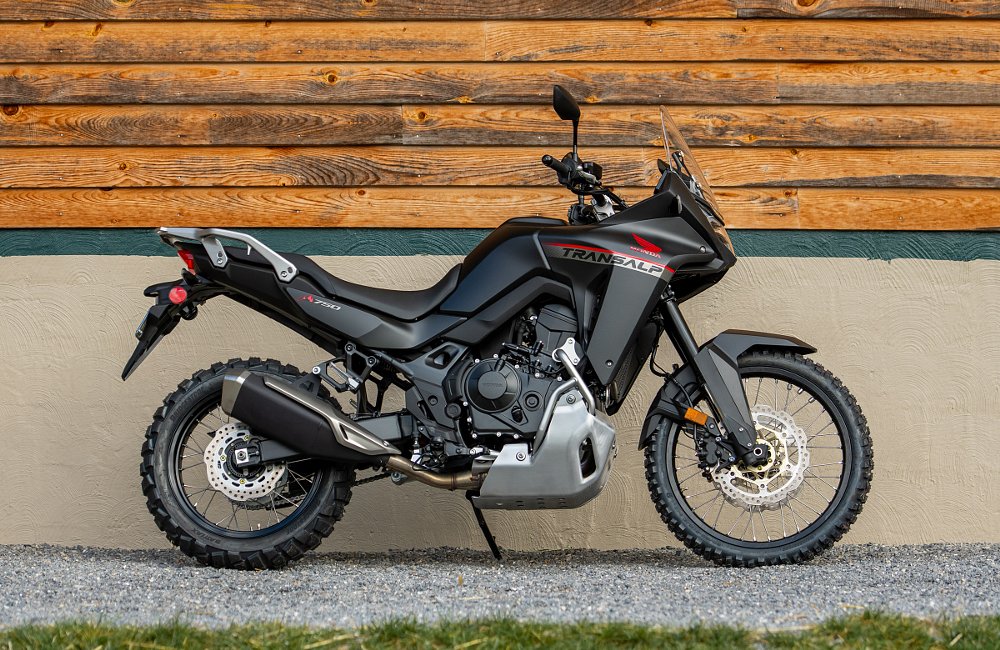
I had the opportunity to saddle up and ride the Transalp in central Pennsylvania in perfect, crisp fall weather under a canopy of changing leaves. I went armed with experience riding two middleweight ADV bikes currently nestled in my own personal garage — the Yamaha Ténéré 700 and the KTM 790 Adventure R — and felt ready to place the Transalp's features into the ADV Venn diagram I'd already sketched in my mind. I anticipated that the motor would be lovely, but the suspension might be lacking, the fuel range might leave me wanting more, and of course, as you all have certainly made clear, that I might miss that cruise control. But after two days and 250 miles, and hitting everything from pavement to Pennsylvania rocks, this bike far exceeded my expectations. I didn't even miss cruise control one bit.
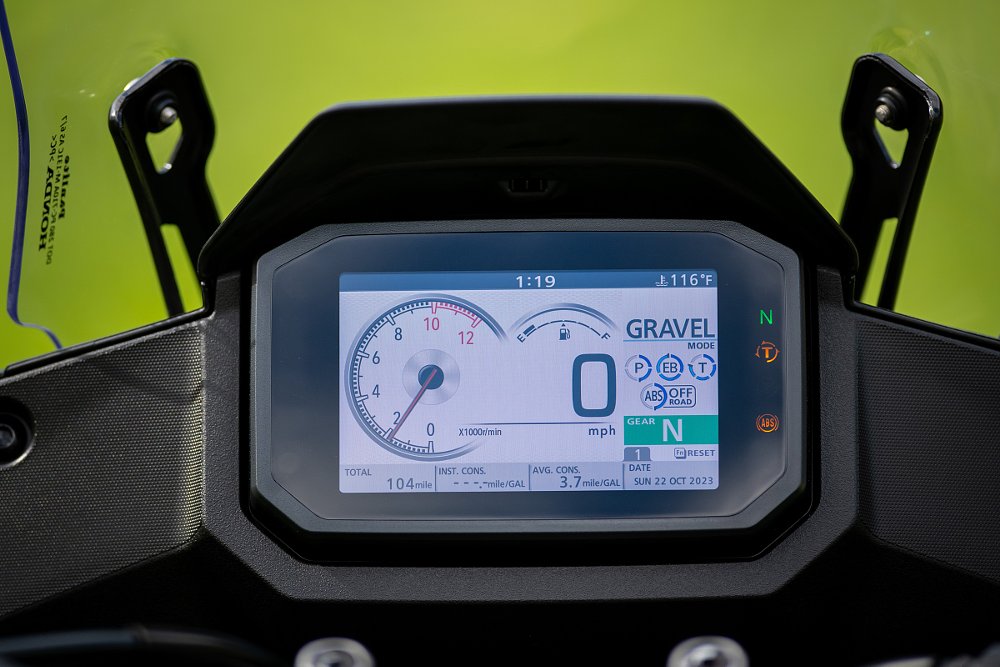
Getting ready to ride the Transalp
It was barely above freezing the morning we began our two-day excursion on the PA Wilds BDR-X. Frost clung to the seats of the Transalps and steam evaporated from the motor as the bikes warmed up. Our breath hung in the air as we toggled through the display options and ride modes. A quick few taps turned the accessory heated grips to high.
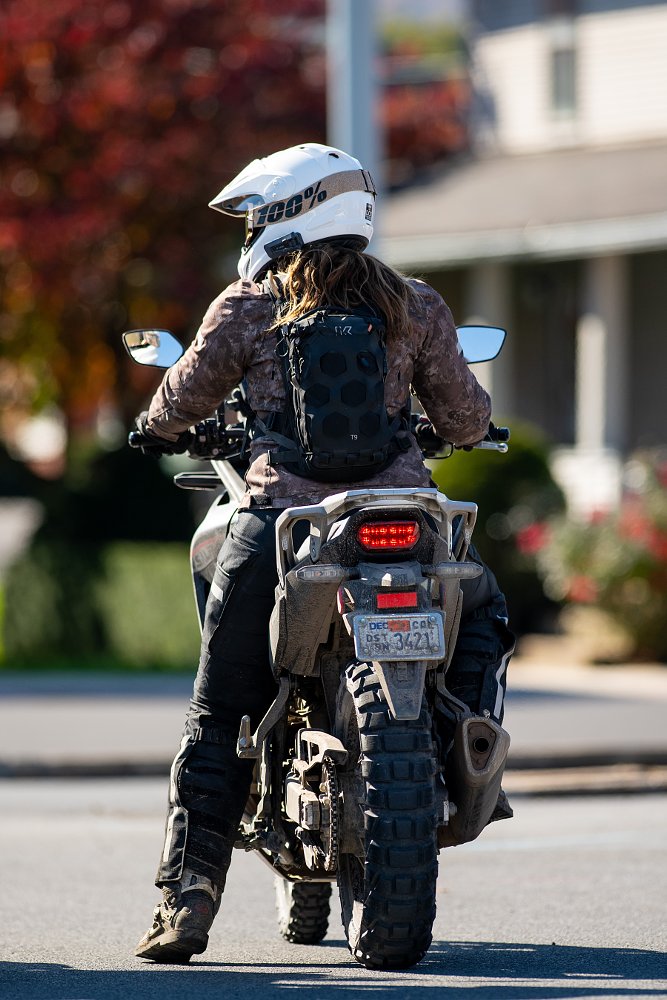
Before we went kickstands-up, we spent a few minutes toggling through the ride modes — Sport, Standard, Rain, Gravel, and a personalized User-Defined mode. Each mode adjusts engine power, engine braking, Honda Selectable Torque Control (Honda's traction control), and rear ABS. Sport mode, for example, punches up the engine power, decreases engine braking and traction control, and locks in both front and rear ABS. Rain mode dials back the power and bumps up both engine braking and traction control. It is incredible how much the bike's performance can be dialed for your ride using these ride modes.
And get this, team: You. Can. Switch. Between. Ride. Modes. While. You're. Moving! Honestly, a miracle.
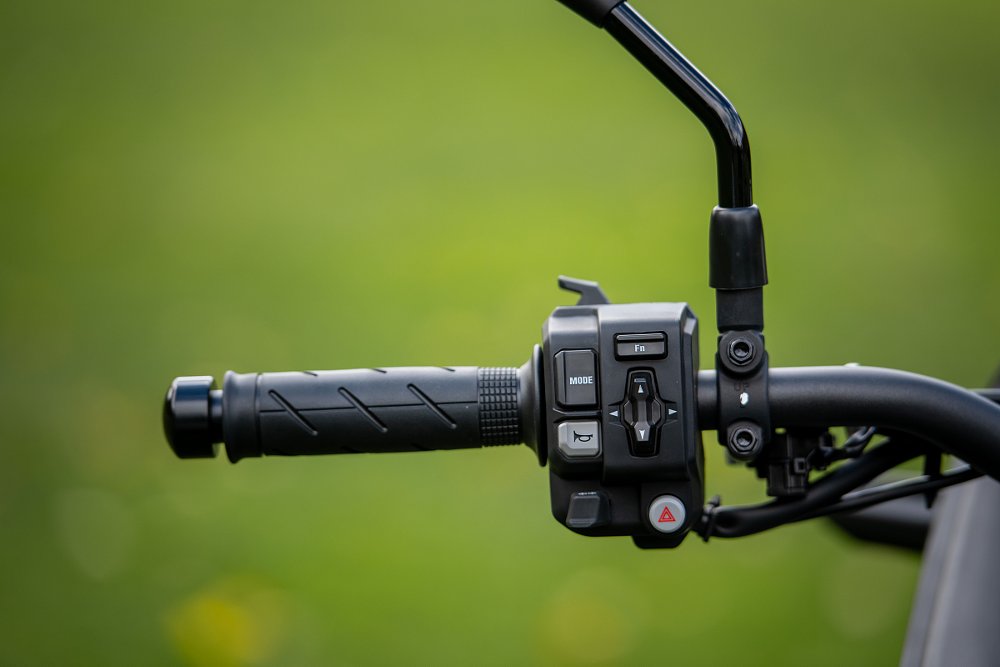
One quick toggle with your thumb, close the throttle, and boom — get your feet on the pegs and stand, because you're ready for that sudden transition to gravel. The number of times I've lost my group on the Ténéré 700 while I stopped to hold down the button to turn off ABS — the only "ride mode" available on that bike. Same for my KTM 790. While I can adjust settings on the fly, I'm cycling through three separate screens to put the bike in off-road mode, turn off traction control, and set the slip, so I often stop to make those adjustments.
On the Transalp, there are four settings for engine power, three for engine braking, six for traction control, and three for ABS — all already assigned to a ride mode in a logical way. Better yet, there's also a user-defined mode. While some may decry the lack of a "Rally" or "Off-road" mode as one of the standard options, I have a tip for you. You can invent your own. You can really set up the bike exactly as you want it to perform for the scenario you're set to encounter.
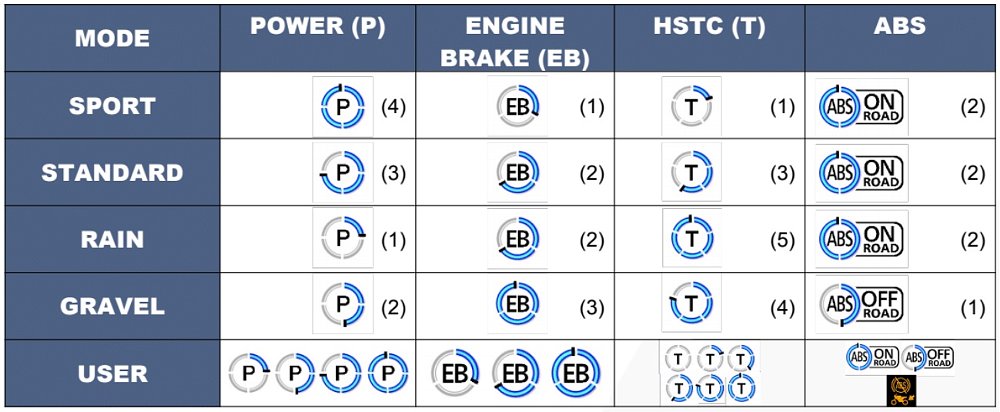
My background in education and some quick math tells me that there are 216 different combinations you could program into your user-defined mode. And the bike will remember your presets. So I took a moment to dial in my personal off-road settings — mid-level power, high engine braking, no traction control, and off-road ABS — so that I would be prepared to tackle any gnarlier trails we might encounter on our ride.
I did, however, learn about a caveat to the user-defined mode's stickiness later on in the ride. If you completely turn off either traction control or ABS, once you turn that key off, those two settings will reset in your user-defined mode. Your selections for engine power and engine braking will remain — only the traction control and ABS settings will reset, and they'll reset only if you turn them completely off. This is typical on an ADV bike in an industry governed by safety parameters. I've been on plenty of rides on other ADV bikes where I've hit the kill switch during a snack break but wouldn't dare touch the key, or else everything that had been set disappears!
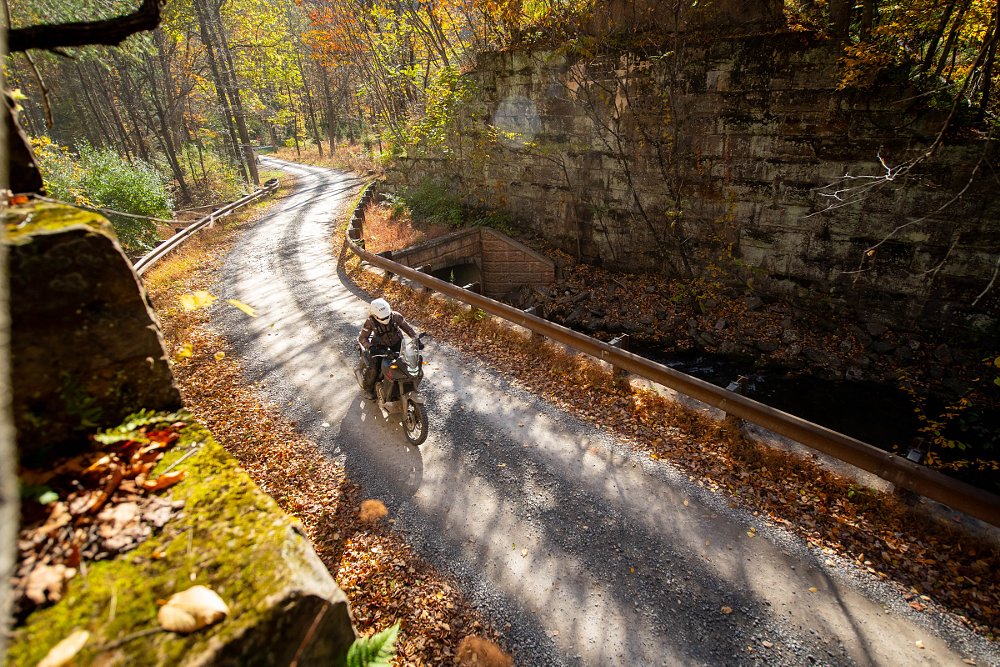
Riding impressions of the Transalp
We floated into the Pennsylvania Wilds, heading toward the forest roads and driveable trails in the Bald Eagle State Forest. The trees glowed with vibrant yellows and oranges, and a blanket of leaves covered the road. We rode for 250 miles up and down ridge passes, through classic rocky Pennsylvania two-track, and on perfect paved twisties. Our route was built from sections of the PA Wilds BDR-X, a newer, shorter, and looped version of the beloved Backcountry Discovery Routes offered in a dozen states across the United States. As a Pennsylvania resident, I was pretty familiar with the roads along this route, and was psyched that this area would be the bike's proving ground.
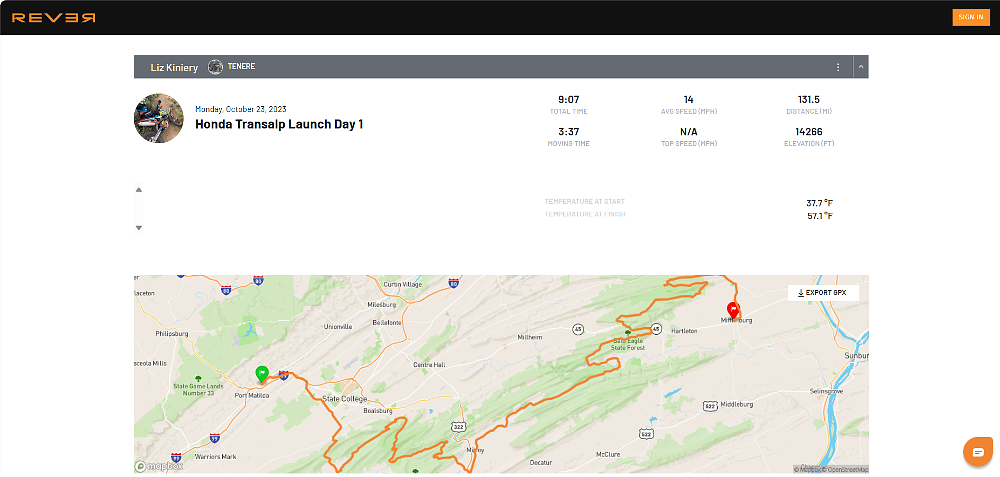
The engine felt smooth and yet had personality. It hummed compliantly at 3,000 rpm, but if I got it up to 5,000, it was ready to pull, with redline at 10,000. I'm used to the KTM 790, a bike that all but insists on stalling at lower rpm, unless you're putting in some clutch work, so I enjoyed the ability to cruise at lower engine speeds.
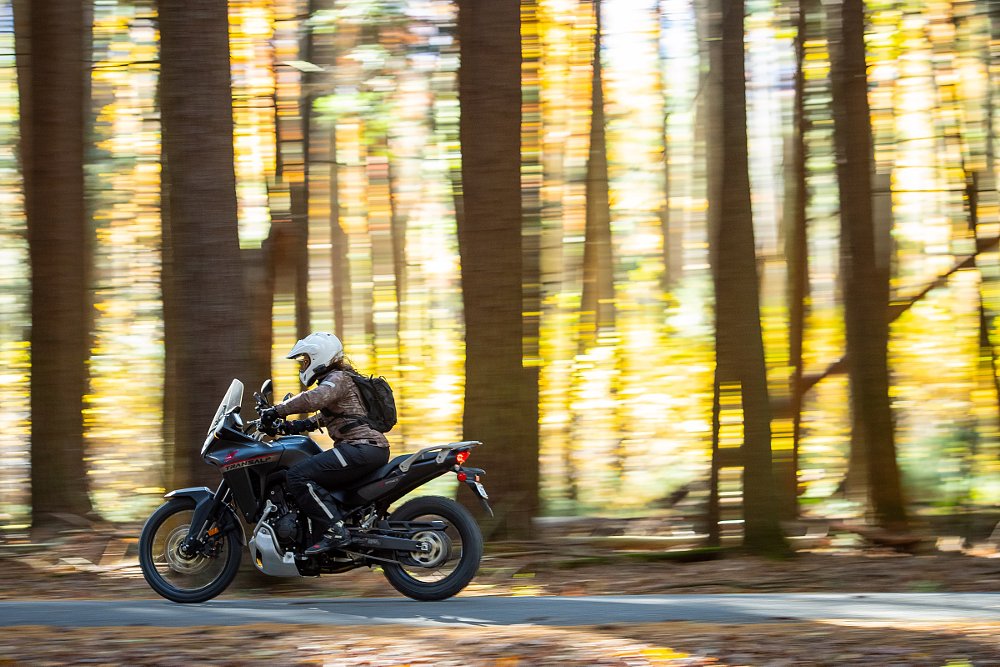
On the street, the bike felt happiest in third or fourth gear, humming right at the peppy 5,000 rpm. A quick check on the brake and a stomp on the quickshifter to downshift before a turn, and the Transalp would effortlessly match revs and pull through. I loved not having to grab a fistful of clutch to shift. I was also really impressed that Honda offers a slipper-and-assist clutch and the quickshifter on a bike at this price point, and smiled each time I used it.
The Transalp felt light for 459 pounds, thanks to excellent engineering around the engine's unicam layout. The single intake and exhaust cam minimizes the height, weight, and volume of the engine, and the benefits are felt 10-fold on the bike.
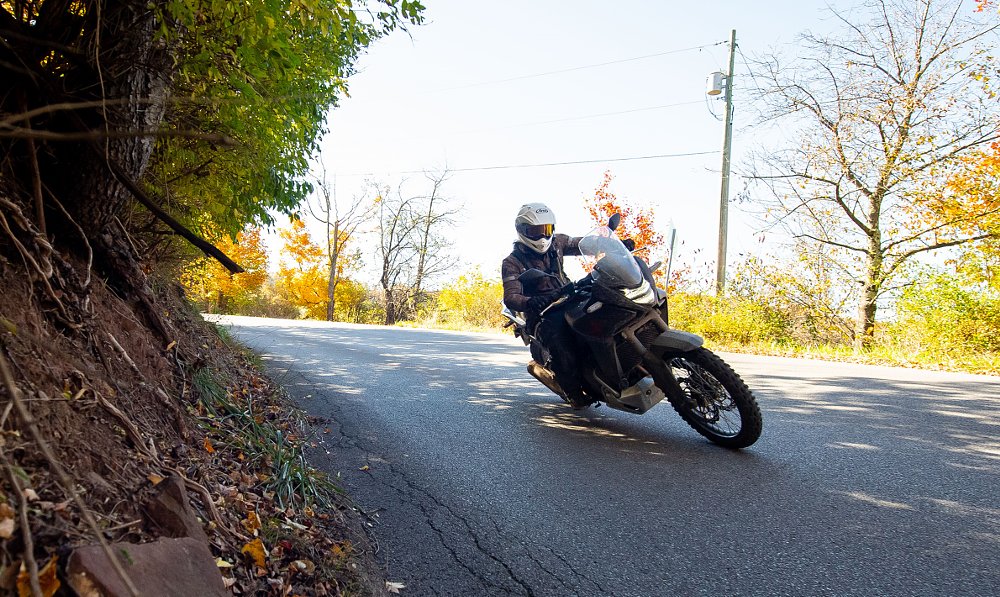
Honda is really proud of the Transalp's touring performance. On the street, in Sport mode, the throttle-by-wire system delivers the power right at that initial twist, and I enjoyed how boldly the power came on. Honda accomplishes this by delivering larger throttle-body valve openings in response to small throttle-input changes when you're in Sport mode. The 21-inch front means the Transalp isn't exactly free-diving into corners like a sport bike, but I didn't feel any hesitation when I leaned it over. The rake and trail (27 degrees and 4.4 inches) are similar to the Ténéré 700 (27 degrees and 4.1 inches), but I could feel a slight increase in stability and decrease in flickability when cornering compared to the T7. This didn't at all diminish the character the motorcycle brought to the twisties.
In the dirt, I anticipated experiencing more shortcomings in the ride modes, but I found both the Gravel mode and my user-defined mode to be great fits for what we encountered on the ride. The Gravel mode softened the onset of power in response to throttle inputs and made for a less twitchy ride and, in the more difficult sections, made slow-going clutch work feel smooth and controlled.
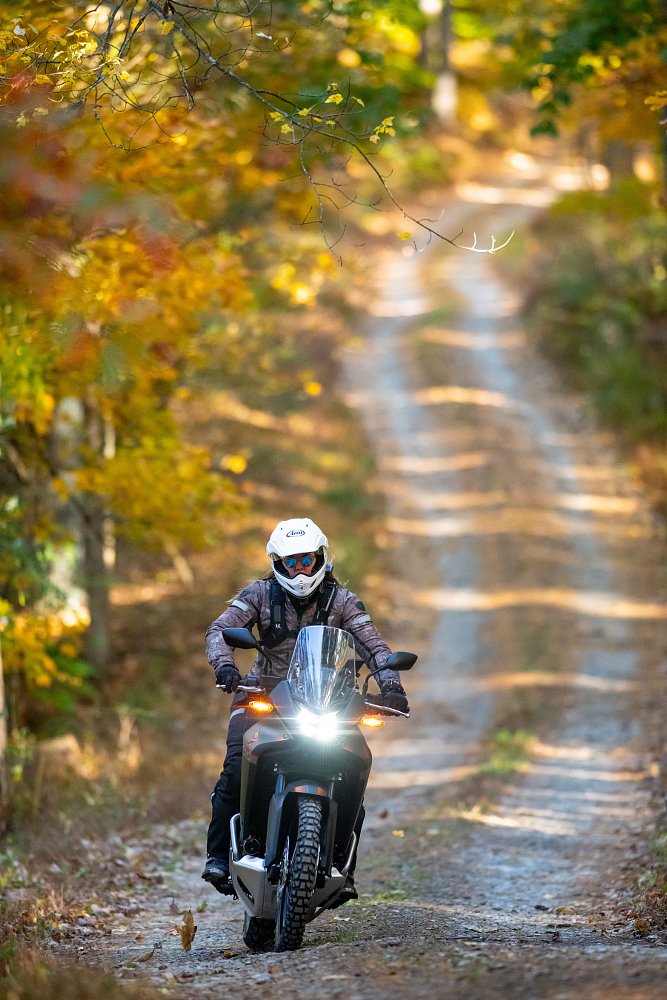
I wanted the Gravel mode traction control setting to work in the rocks, too, but once we got to some gnarlier, rocky two-track, the traction control totally limited my forward movement. It was all just stuttering wheels. That was when I swapped over to my user-defined mode, which had traction control completely off. And once I got going with traction control turned off, I had no issue powering up that rocky climb.
The bike felt light as I pushed it through more technical trail, but I could feel the suspension was a little soft if I tried to push it at higher speeds. We crawled down one notoriously rocky section with both planted, pointy rocks and rolling, heavy baby-head rocks (does everyone call them that?), and I fully expected to struggle because the suspension would be too slow to hit and rebound. We didn't set sag prior to the ride, so I imagine that may have helped some, as at 200 pounds I'm sure I'm a little heavier than the rider the bike is sprung for. But with momentum, good line choices, and appropriate modulation of the brakes, I had no issues dropping down rocky shelves and picking the best lines. I'm certainly not going to race through a rock garden on this bike, but I could take it on an expert option on a BDR and enjoy it.
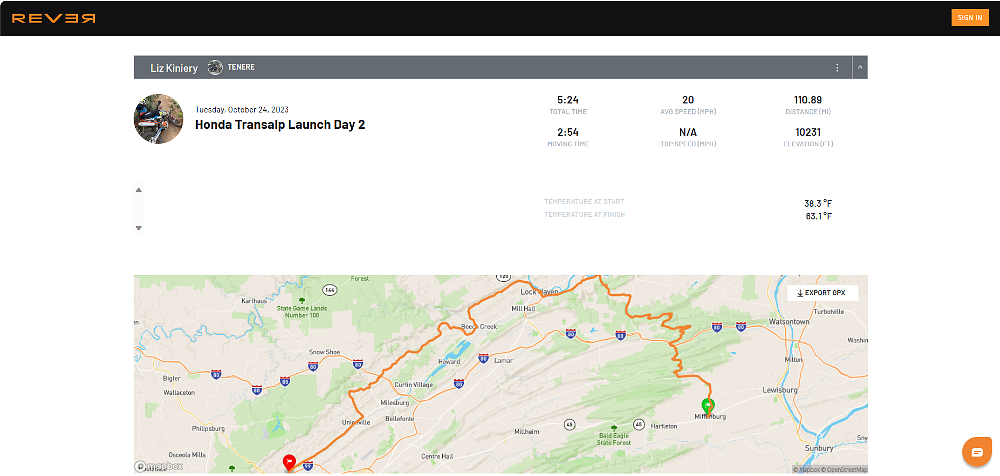
Honda was unapologetically clear that the Transalp was not designed for aggressive off-road riding situations. The Transalp is positioned as an all-around adventure motorcycle at the midpoint between touring and off-road. It's a bike for the person who encounters a dirt road on the route and doesn't want to have to turn around. And the Transalp expertly fits that bill.
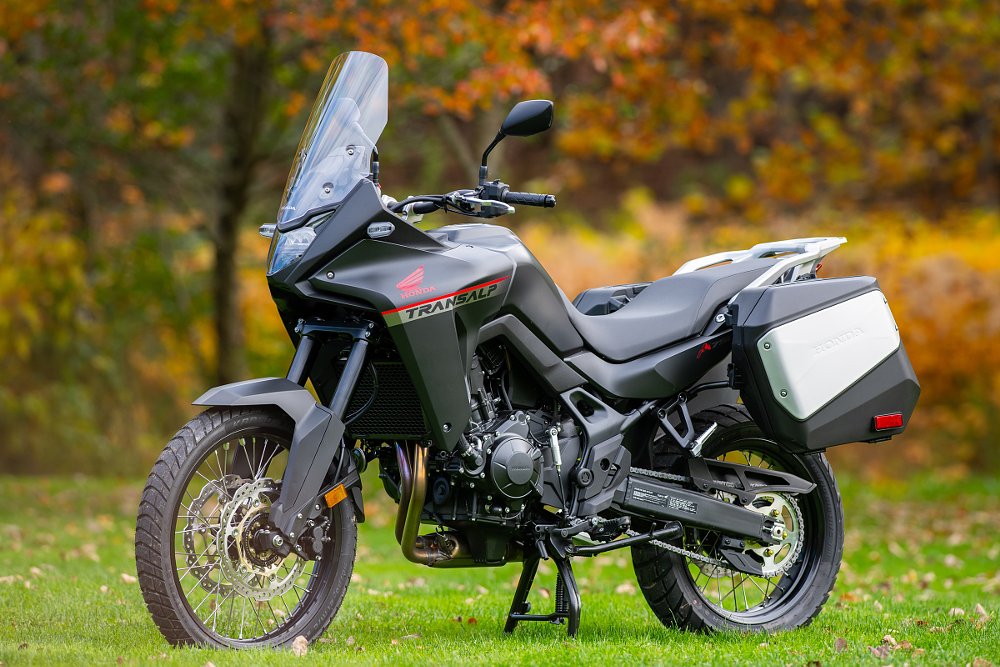
Ergonomics, features, tires, etc.
I had very few notes about handlebar and positioning, the rider pocket, and other ergonomics. The positioning felt just as natural elbows-up in a standing attack mode as it did sitting and moving my weight side-to-side in the paved twisties. And after 250 miles over two days, I am pleased to report that my lower back, seat, and shoulders fared well. I did have to adjust the shift lever just a bit to be able to flick it with my bulkier motocross boots, and after two full days of standing, I wished I'd had the optional wider enduro footpegs. The windshield created a comfortable pocket for me, both deflecting air without buffeting while seated, and staying out of the way while standing. For taller riders or those looking for even more wind protection, a taller windshield is available as an option. Honda said the Transalp was designed with adventure touring comfort in mind, and in my opinion they knocked this out of the park.
I know some folks have had concerns about the tank size at 4.5 gallons, but when we pulled into the Rusty Rail Brewing Company in Mifflinburg, Pennsylvania, for a couple of Fog Monster IPAs at the end of a 130-mile ride day, my tank was perfectly at half empty (or half full, depending on what kind of person you are). And if I'm riding with a friend on a Ténéré 700, we're going to need to look for fuel at around the same time, anyway.
And, of course, I can't fail to mention that all of this motorcycle goodness is available at $9,999 MSRP. To get the safety and handling features of off-road ABS and multiple ride modes in package under $10,000 is incredible.
Could Honda have added cruise control and spoked wheels that accommodate tubeless tires? Possibly. The plight of the affordable middleweight adventure bike is that manufacturers need to make choices to appeal to the target demographic — and in this case, it's the budget-conscious buyer. It can't be everything for everyone at an affordable price point.
The ADV segment is well supplied by the aftermarket, especially for buyers who want to ride hard off-road. I even have Öhlins suspension on my Ténéré 700. But if you demand cruise control and adjustable suspension, this is probably not the bike for you.
Honda already has a large number of accessories for the Transalp and to make it easier to sort them out, Honda put together four packages. You can still buy individual accessories, but the packages make a convenient starting point to work with your dealer to outfit the Transalp to your specific needs.
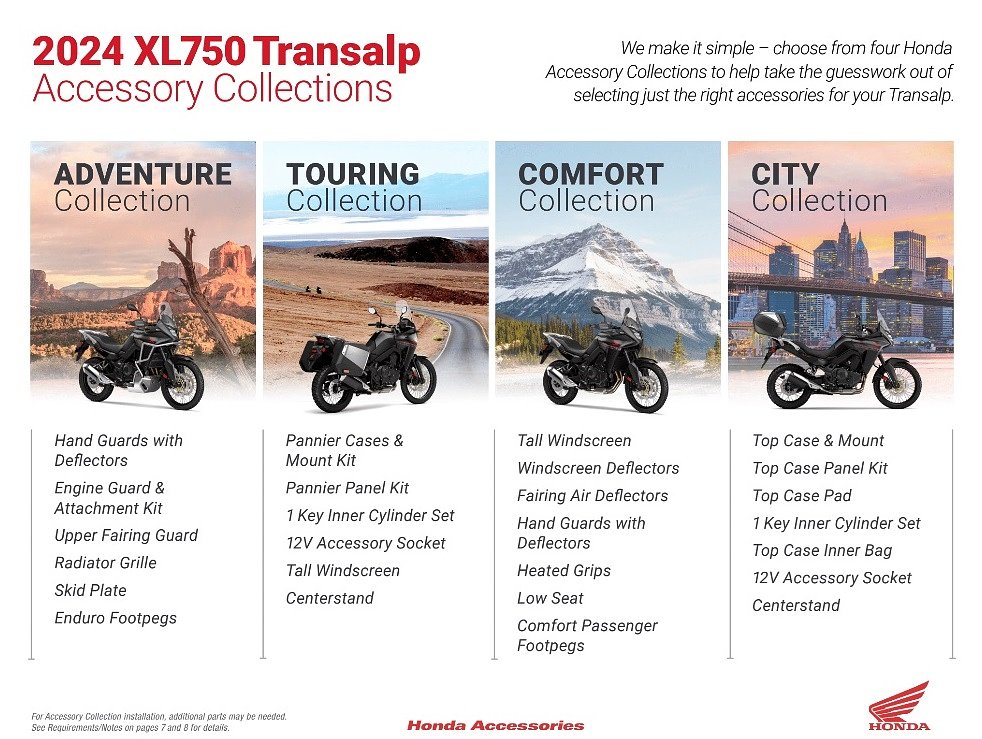
Our bikes for the launch came equipped with heated grips, engine guards, a skid plate, and passenger footpegs. Buyers can also add pannier cases, radiator protection, an upper fairing guard, handguards, enduro footpegs, a tank bag, a 12-volt accessory socket for power, windscreen and fairing deflectors, a tall windscreen, a center stand, a top case, and a low seat.
In my shopping cart, I'd be sure to add the engine guards, skid plate, wider footpegs (non-negotiable for me), power socket, heated grips, and handguards. I'd also add the center stand, to aid in tube changes out on the trail. These add-ons from the Honda accessory catalog would add around $1,800 to the base price. Any time I buy a new off-road bike, I expect to spend at least 10% of the cost of the motorcycle to protect it in the dirt and ensure it's set up for me, and the Transalp is no exception.
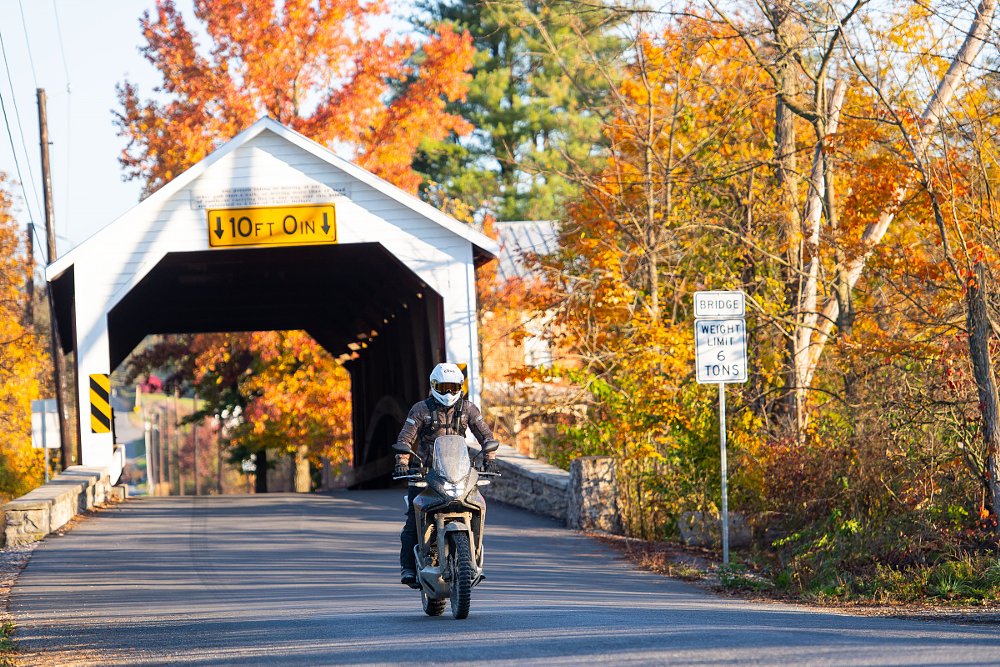
The Transalp and the competition
I could see the Transalp easily replacing either the Ténéré 700 or the KTM 790 in my garage, mostly because I leave the hard enduro trails for my KTM 300 two-stroke. If I wanted a bike that I could push like Pol Tarrés pushes his Ténéré 700, I would opt for a machine with a more adjustable suspension and greater suspension travel. But for me, the ADV bikes in my garage are for all-around adventure, to experience the beauty of back roads, small towns, twisty roads, and then, when I see that beautiful, fern-lined trail skirt off into the distance, they get me to the magic down that trail.
Currently, the Ténéré 700 (MSRP: $10,799) is the main competition at about this price point, but I would argue the Transalp is much more accessible. I'm a skilled rider, and I still felt it. The Ténéré 700 carries its weight so high, and its seat height is high, and then when I'm off road, the only option I have is to turn ABS completely off. The Transalp is truly less daunting, and then it keeps those safety features, even off-road. And while the Ténéré 700 has more suspension adjustability, I believe that riders who really focus on off-road performance are going to add aftermarket suspension anyway.
Some folks might opt for an Aprilia Tuareg 660, but you can't beat the dealer network and reliability of Honda, and the Tuareg is 20 percent more expensive.
The KTM 790 might rival the Transalp, but I truly believe the audiences for these two bikes are almost two completely independent circles in a Venn diagram. I also had more fun on the street on the Honda. The KTM is much harder to push into the corners. I sometimes begrudge how high in the revs I have to keep it and if I bought one new, I'd spend a fortune on it.
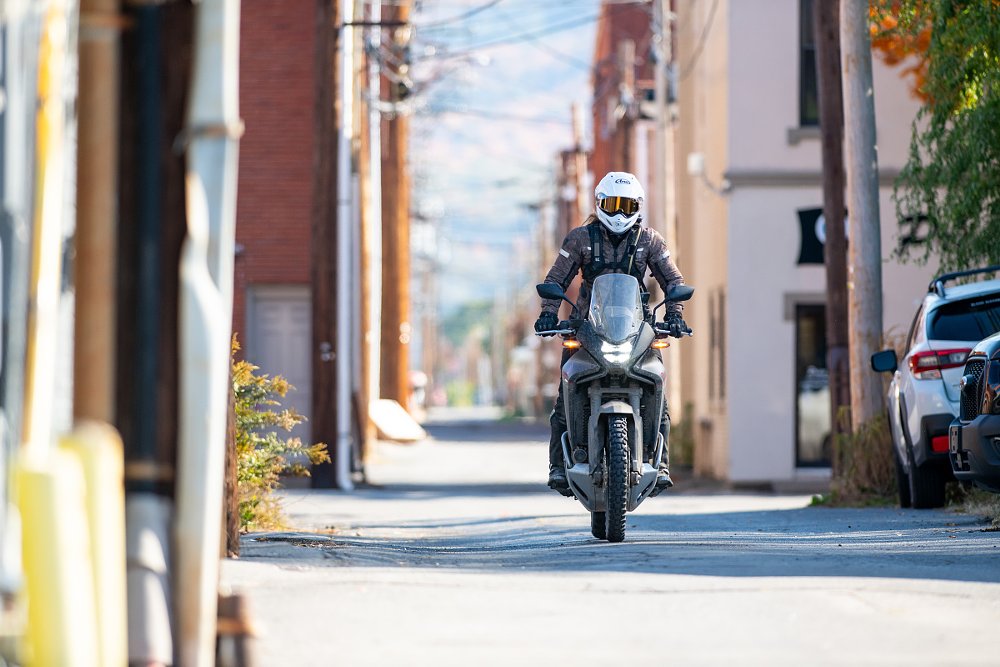
I see the Transalp as being for the person who enjoys the outdoors and wants a machine that won't put them into debt to experience the freedom that ADV brings. It can also serve riders who are sport-tourers at heart, but want to get to that remote camping spot or beautiful trailhead.
I really can't wait to see this machine out on the Backcountry Discovery Routes, churning up the paved twisties, and picking lines through the ferns.
| 2023 Honda XL750 Transalp | |
|---|---|
| Price (MSRP) | $9,999 |
| Engine | 755 cc, liquid-cooled, eight-valve, parallel twin |
|
Transmission, final drive |
Six-speed, chain |
| Claimed horsepower | 82 @ 8,500 rpm |
| Claimed torque | 53 foot-pounds @ 7,000 rpm |
| Frame | Steel tubular |
| Front suspension | Showa 43 mm SFF-CA, adjustable for preload; 7.9 inches of travel |
| Rear suspension | Showa single shock, adjustable for preload; 7.5 inches of travel |
| Front brake | Dual two-piston calipers, 310 mm discs, ABS |
| Rear brake | Single-piston caliper, 256 mm disc, ABS |
| Rake, trail | 27.0 degrees, 4.4 inches |
| Wheelbase | 61.5 inches |
| Seat height | 33.7 inches |
| Fuel capacity | 4.5 gallons |
| Tires | Metzeler Karoo Street, 90/90R21 front, 150/70R18 rear (tubed) |
| Claimed weight | 458.6 pounds (wet) |
| Available | Now |
| Warranty | 36 months |
| More info | powersports.honda.com |




